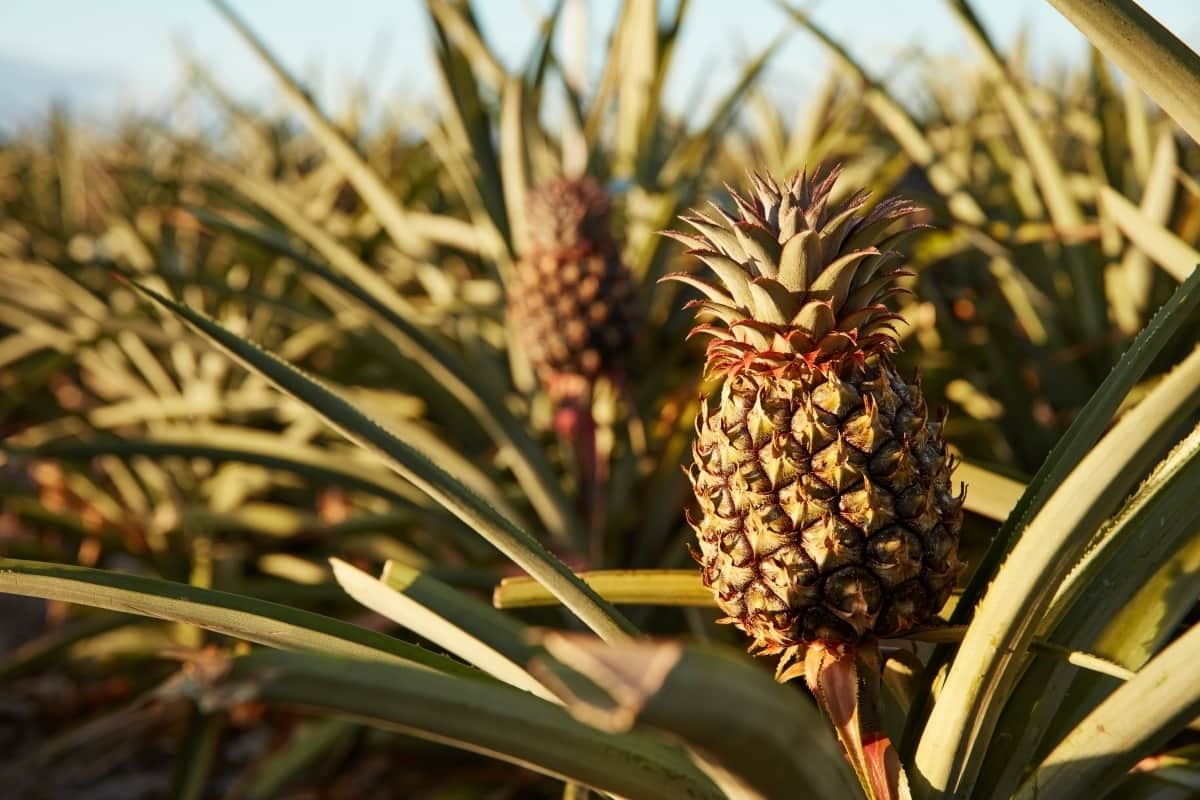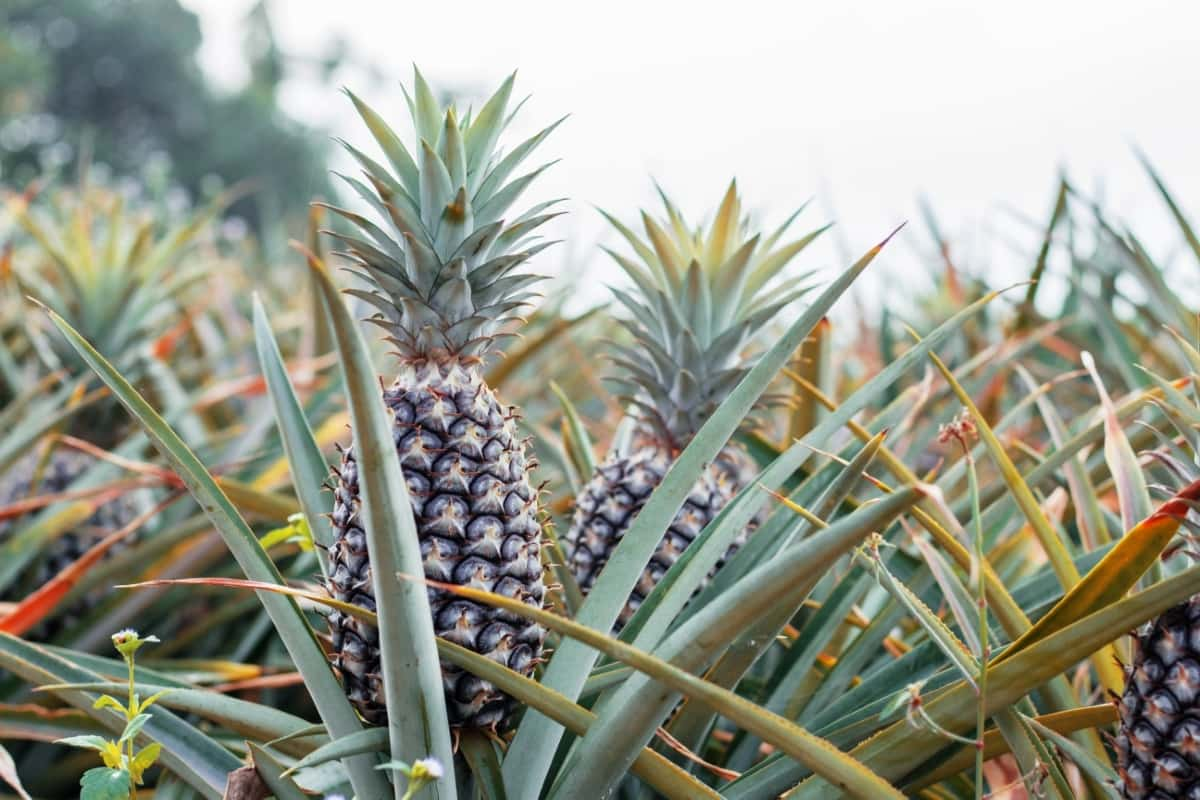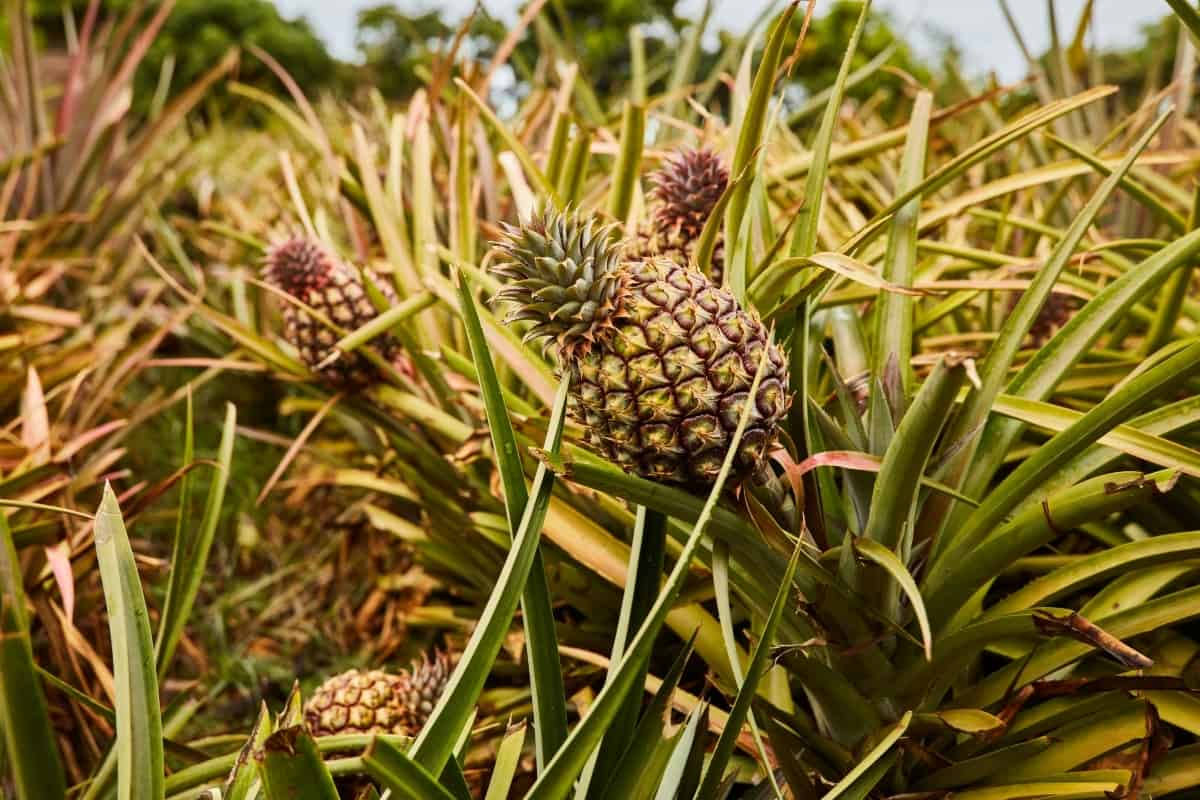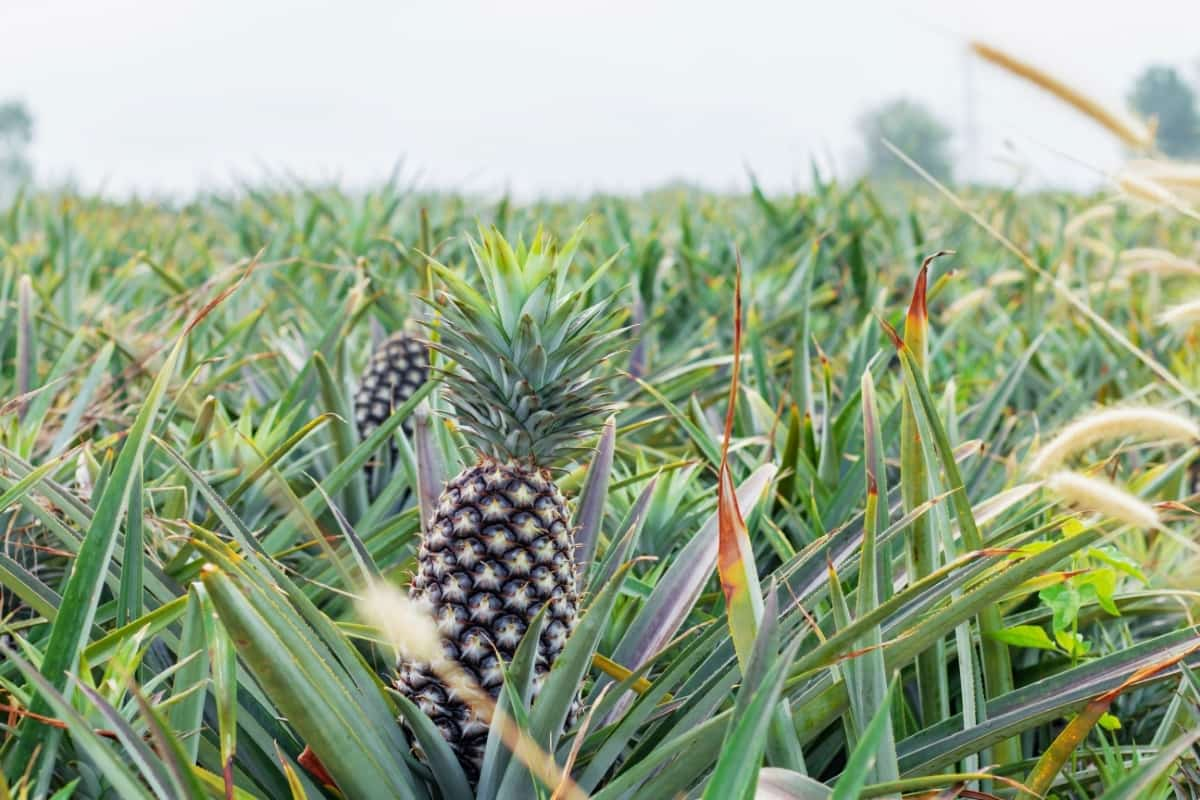With its sweet and tropical flavor, pineapple is a favorite fruit for many. Whether growing pineapples in your garden or enjoying them as part of your diet, you might encounter various pests that can harm your pineapple plants. While chemical pesticides are commonly used to combat these pests, natural and organic methods can help protect your pineapple plants and fruit without harmful chemicals. In this guide, we will explore how to control pineapple pests using natural and organic treatments to ensure healthy and pest-free pineapple harvests.

How to Control Pineapple Pests Naturally
Pineapple Pests: Identifying the Most Common Pests and Their Impact on Your Crop
- Mealy Bugs: Small, soft-bodied insects covered in a waxy, cotton-like substance. They feed on plant sap, causing wilting, yellowing, and stunted growth. Severe infestations can lead to plant death.
- Thrips: Tiny, slender insects with fringed wings. They scrape the surface of leaves, causing silvering, distortion, and reduced fruit quality.
- Fruit Borer: Larvae of moths or beetles that bore into the fruit. They tunnel through the fruit, causing internal damage and making it unmarketable.
- Bud Moths: Larvae of moths that infest flower buds. They can prevent flowers from opening and reduce fruit sets.
- Fruit Flies: Small flies, often with distinctive markings. They lay eggs in fruit, producing infested and unmarketable produce.
- White Grubs: Larvae of certain beetles, typically C-shaped and creamy-white. They feed on plant roots, leading to weakened plants and reduced fruit production.
- Beetles: Hard-shelled insects with varied colors and sizes. Depending on the species, they may feed on foliage, fruit, or roots, causing damage to different parts of the plant.
- Weevils: Curved snout, often with an elongated body. They feed on plant tissue, causing damage to leaves, buds, and fruit.
Using Neem Oil to Control Pineapple Pests: A Safe and Effective Method
Neem oil, made from the neem tree seeds, is a safe and effective natural method for controlling pineapple pests. Its active compounds disrupt insects’ feeding and reproductive cycles, making it an excellent deterrent. When applied to the foliage, neem oil is a protective barrier against pests like mealybugs, thrips, and mites.
It’s biodegradable and poses minimal risk to beneficial insects, animals, and the environment. Regular application can help maintain a pest-free pineapple crop without resorting to harsh chemicals. However, using application instructions in moderation is important to ensure optimal plant effectiveness and safety.
The Role of Beneficial Insects in Controlling Pineapple Pests: Introduction of Predatory Insects
Predatory insects like ladybugs, parasitoid wasps, and lacewings are introduced to the ecosystem to prey on common pests. Ladybugs consume aphids and scale insects, while parasitoid wasps lay their eggs inside pest insects, ultimately killing them. Lacewings feed on various small problems, such as thrips and mites. By introducing these natural predators, farmers can reduce the requirement for chemical pesticides and maintain a healthier, more sustainable pineapple crop.
In case you missed it: How to Control Apricot Pests Naturally: How to Get Rid of Them with Natural and Organic Treatment

Companion Planting: How Planting Certain Plants Together Can Deter Pineapple Pests
Companion planting involves strategically planting certain species alongside pineapples to deter pests. For example, marigolds emit a scent that repels nematodes and aphids, protecting the pineapples. Similarly, basil and mint can deter thrips and aphids. These companion plants act as natural pest repellents, reducing the need for chemical interventions. Additionally, they can attract beneficial insects that prey on pineapple pests. This practice fosters a healthier and more balanced ecosystem, improving pest management and the overall health of pineapple crops.
Crop Rotation: How Rotating Your Pineapple Crop Can Help Control Pests
By planting different crops in a sequence, pests specific to pineapples, such as nematodes and certain insects, are disrupted in their life cycles. When non-host crops follow pineapples, these pests struggle to find suitable hosts, and their populations decline. Crop rotation also helps improve soil health and reduce disease pressure.
This sustainable approach reduces the reliance on chemical pesticides, preserves the balance of the ecosystem, and promotes healthier pineapple plants with fewer pest-related issues, ultimately leading to more productive and sustainable pineapple farming.
Using Diatomaceous Earth to Control Pineapple Pests: A Non-Toxic and Organic Method
Diatomaceous Earth (DE) is a non-toxic and organic method for controlling pineapple pests. It consists of finely ground, fossilized algae with sharp edges that pierce the exoskeleton of insects, dehydrating and ultimately killing them. DE is safe and does not harm beneficial insects. Sprinkling DE around pineapple plants forms a protective barrier against crawling pests like ants and slugs. It’s an eco-friendly alternative to chemical pesticides and provides effective pest control without compromising the health of the pineapple crop or the surrounding environment.
In case you missed it: How to Control Orange Pests Naturally: How to Get Rid of Them with Natural and Organic Treatment

Traps and Barriers: How to Use Traps and Barriers to Control Pineapple Pests
Traps and barriers are essential components of integrated pest management for pineapple crops. Yellow sticky traps near the plants attract and capture flying pests such as thrips and fruit flies. Physical barriers like row covers can shield pineapples from aphids, scale insects, and other crawling pests. Copper tape or collars discourage snails and slugs, while tree banding captures weevils and similar problems.
Biological Control: How to Use Parasitic Wasps to Control Pineapple Pests
Biological control using parasitic wasps is an effective, environmentally friendly method for managing pineapple pests. To employ this strategy, first identify the specific pest species to target. Then, release parasitoid wasps that are natural enemies of these pests. These small wasps lay their eggs inside the pest insects.
As the wasp larvae develop, they consume and eventually kill their hosts. To ensure success, introduce the parasitic wasps at the right time, when the pest population is at its peak. This method helps reduce pest numbers and the damage they cause to pineapple crops while minimizing the need for chemical pesticides.
Integrated Pest Management (IPM): A Holistic Approach to Controlling Pineapple Pests
Integrated Pest Management (IPM) is a holistic strategy for controlling pineapple pests that focuses on prevention, monitoring, and intervention. It combines various methods, such as biological control, cultural practices, trap crops, and judicious use of pesticides. IPM promotes sustainable farming by minimizing the environmental impact of chemical treatments.
Regular monitoring and early pest detection are key components, allowing for timely, targeted interventions when necessary. By integrating multiple approaches, IPM helps maintain a healthier pineapple crop, reduce pest-related losses, and enhance long-term pest management while conserving the ecosystem.
In case you missed it: How to Control Peach Pests Naturally: How to Get Rid of Them with Natural and Organic Treatment

Conclusion
In conclusion, employing natural and organic treatments to control pineapple pests safeguards the environment and beneficial organisms and fosters sustainable and healthier pineapple crops. These eco-friendly techniques provide effective alternatives to chemical pesticides. By embracing these holistic approaches, farmers can achieve safe pest management that contributes to long-term agricultural sustainability.
- Beneficial Insects in Pest Management
- Natural Solutions for Pest Control in Flower Gardens
- Types of Fungicides Used in Agriculture
- Common Issues in the Fruit Development Stage of Pomegranate Farming
- Fruit Development Issues in Papaya: Easy Solutions and Treatment
- Soil-Borne Diseases and How to Protect Your Plants
- Practices to Prevent Disease Spread in the Garden
- From Wilted to Thriving: How to Treat Root Rot Naturally in Houseplants
- Natural Remedies to Cure Brown Spots on Fig Tree Leaves